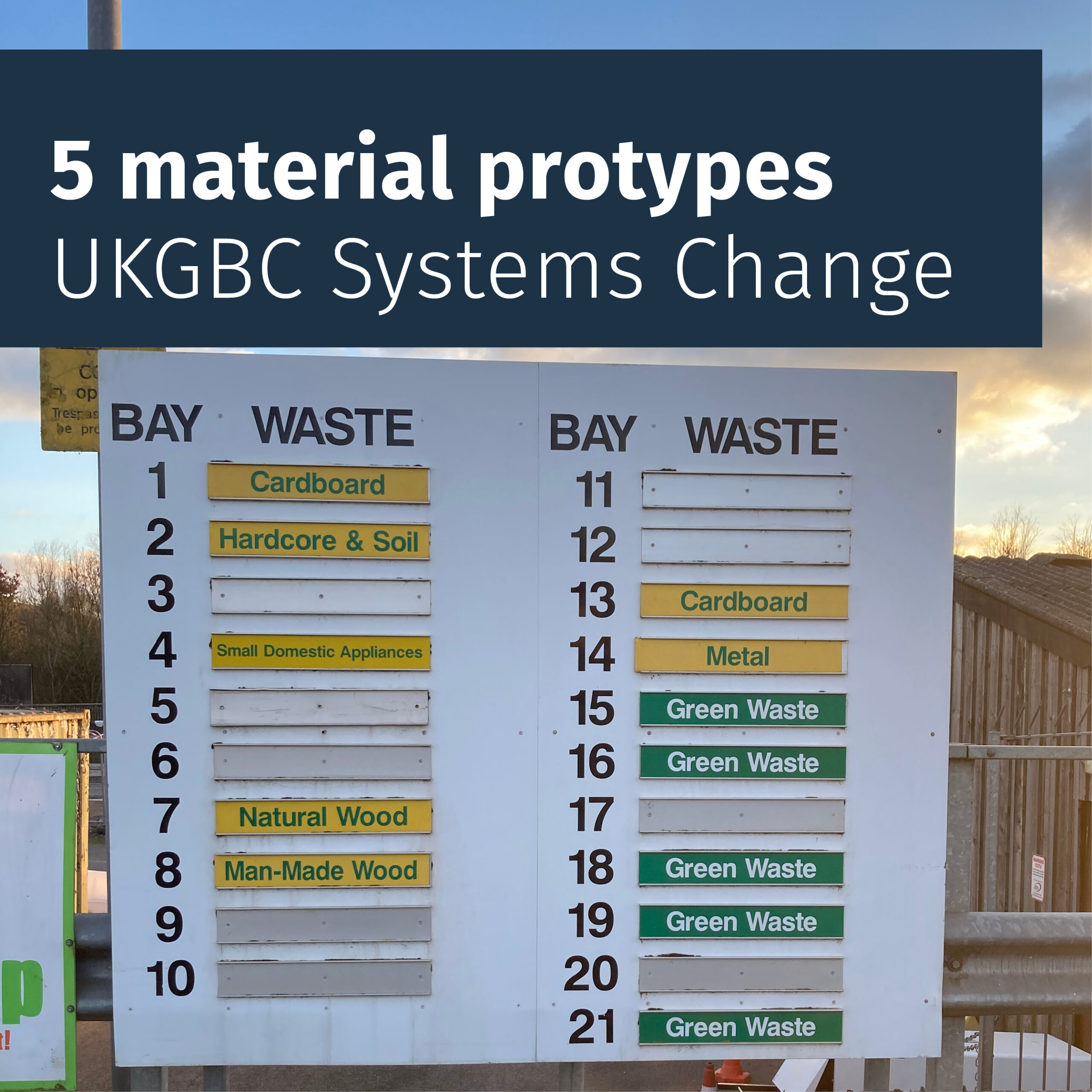
In 2023 I began a six month journey as a contributor to one of six fractals set up by the UKGBC to explore a Sustainable Built Environment through Systems Change. The focus of our fractal group is Material Ecosystems and brings together people with diverse perspectives from across the construction industry. We began working on the idea of how to make material resources a common good where we become custodians rather than users of materials and the regenerative procurement and use of materials becomes a norm.
Different building elements and materials have different impacts. To understand materials systems in buildings in terms of embodied carbon I found ARUP’s report halving construction emissions today a useful guide to the impacts of different elements of construction. Typically, 50% of carbon is embodied in the structure of buildings, with 20% in services, 15% in the skin and 15% in the internal fit out and stuff. As so much carbon is already invested in existing buildings adapting and reusing these and decarbonising new buildings are equally important.
However, carbon accounting misses out the impacts of extraction on communities and nature that can be difficult to track through supply chains. This has been an important dimension to address. This is explored in the UKGBC knowledge hub on Embodied Ecological Impacts where they highlight how; ‘In a world of globalised trade and supply chains, many negative impacts are transferred to sites and areas remote from the building site, such as deforestation, water scarcity, pollution, and even violent conflicts. These can be hard to identify in a fragmented, global industry that often lacks transparency.’
As a group we have been asking our networks on Linkedin and in person for responses to these what if questions:
- You can only lease materials, not buy them
- 50% of your materials have to be from within 30 miles of the site.
- What does a functioning market for used materials look like?
- There are no new materials.
- There are only natural (biogenic) materials.
- What needs to be true to scale a take-back approach?
And to tell us their thoughts around:
- What do you like about the idea?
- Why won’t it work?
- What’s the biggest thing that would need to be true in your field to make it happen?
We had an interesting response so many people are engaging with these possibilities. We are now working on a prototype that is a hybrid of these approaches.